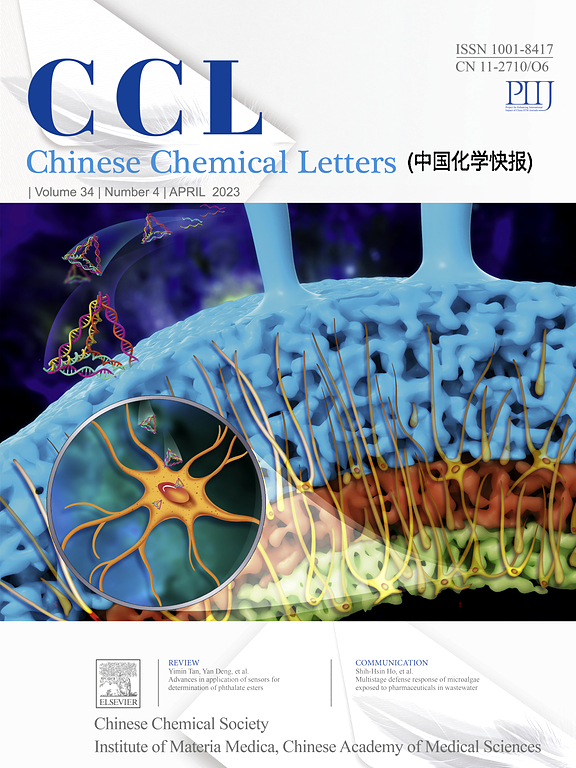Solvent engineering in perovskite nanocrystal colloid inks for super-fine electrohydrodynamic inkjet printing of color conversion microstructures in micro-LED displays
IF 8.9
1区 化学
Q1 CHEMISTRY, MULTIDISCIPLINARY
引用次数: 0
Abstract
Super-fine electrohydrodynamic inkjet (SIJ) printing of perovskite nanocrystal (PNC) colloid ink exhibits significant potential in the fabrication of high-resolution color conversion microstructures arrays for full-color micro-LED displays. However, the impact of solvent on both the printing process and the morphology of SIJ-printed PNC color conversion microstructures remains underexplored. In this study, we prepared samples of CsPbBr3 PNC colloid inks in various solvents and investigated the solvent's impact on SIJ printed PNC microstructures. Our findings reveal that the boiling point of the solvent is crucial to the SIJ printing process of PNC colloid inks. Only does the boiling point of the solvent fall in the optimal range, the regular positioned, micron-scaled, conical PNC microstructures can be successfully printed. Below this optimal range, the ink is unable to be ejected from the nozzle; while above this range, irregular positioned microstructures with nanoscale height and coffee-ring-like morphology are produced. Based on these observations, high-resolution color conversion PNC microstructures were effectively prepared using SIJ printing of PNC colloid ink dispersed in dimethylbenzene solvent.

钙钛矿纳米晶体胶体油墨的溶剂工程,用于超细电流体动力喷墨打印微细led显示屏的彩色转换微结构
钙钛矿纳米晶胶体油墨的超细电流体动力喷墨(SIJ)打印在制造用于全彩微型led显示屏的高分辨率颜色转换微结构阵列方面具有重要的潜力。然而,溶剂对sij印刷的PNC颜色转换微结构的印刷工艺和形貌的影响仍未得到充分的研究。在这项研究中,我们在不同的溶剂中制备了CsPbBr3 PNC胶体墨水样品,并研究了溶剂对SIJ印刷PNC微观结构的影响。我们的研究结果表明,溶剂的沸点对PNC胶体油墨的SIJ印刷过程至关重要。只有溶剂的沸点落在最佳范围内,才能成功打印出定位规则、微米级、圆锥形的PNC微结构。低于此最佳范围,油墨无法从喷嘴喷出;在此范围以上,会产生具有纳米级高度和咖啡环状形态的不规则定位微结构。在此基础上,利用分散在二甲苯溶剂中的PNC胶体油墨进行SIJ打印,有效地制备了高分辨率彩色转换PNC微结构。
本文章由计算机程序翻译,如有差异,请以英文原文为准。
求助全文
约1分钟内获得全文
求助全文
来源期刊

Chinese Chemical Letters
化学-化学综合
CiteScore
14.10
自引率
15.40%
发文量
8969
审稿时长
1.6 months
期刊介绍:
Chinese Chemical Letters (CCL) (ISSN 1001-8417) was founded in July 1990. The journal publishes preliminary accounts in the whole field of chemistry, including inorganic chemistry, organic chemistry, analytical chemistry, physical chemistry, polymer chemistry, applied chemistry, etc.Chinese Chemical Letters does not accept articles previously published or scheduled to be published. To verify originality, your article may be checked by the originality detection service CrossCheck.
 求助内容:
求助内容: 应助结果提醒方式:
应助结果提醒方式:


